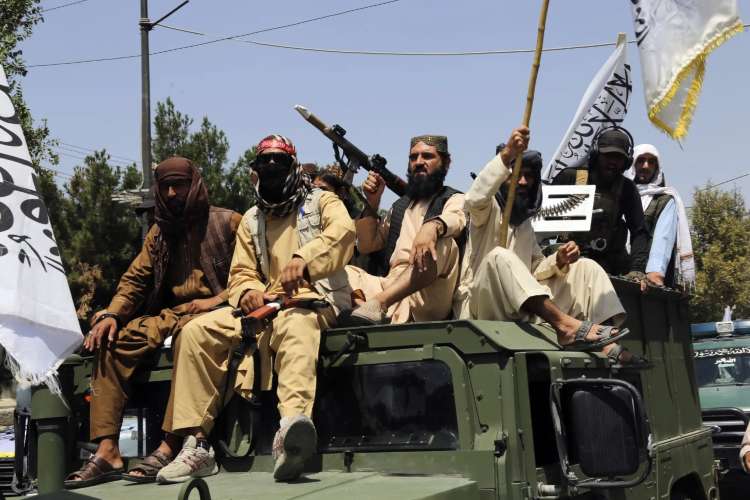
Afghanistan today is poised between ruin and renewal, trapped in the paradox of faith that once promised unity but now struggles with its isolation. Since the Taliban recaptured Kabul in 2021, the regime has sought to emerge from diplomatic isolation, but finds itself constrained by the very ideology it claims to guard. Its hardline religious posture, especially its systematic exclusion of women from education, the workplace, and public life, has alienated much of the international community and hindered its chances of full normalisation.
Women are not peripheral symbols in Afghanistan’s collapse, They are the main victims and tests of legitimacy. The policy of gender exclusion is now deep-rooted. The UN Human Rights office speaks of “institutionalised discrimination, segregation, disrespect for human dignity, and exclusion of women and girls” under Taliban rule. Schools for girls beyond grade six remain closed; women are barred from most workplaces; official decrees such as the “Propagation of Virtue and Prevention of Vice” law further codify gender control.
READ I Skilled migration threatens to derail Viksit Bharat dream
Taliban rule and the cost of ideological rigidity
This ideological posture is not cost-free. Internationally, no major power beyond Russia has recognised the Taliban government as of October 2025. Russia’s formal recognition in July 2025 stands as an outlier, even as other countries maintain de facto engagement without de jure recognition. The UN General Assembly and Human Rights Council have responded with resolutions condemning Taliban policies, especially toward women, and establishing mechanisms to document abuse.
Diplomatically, Afghanistan now operates as a semi-state: its external missions, envoys, and trade links help it survive, but lack full diplomatic legitimacy. The regime’s financial isolation is extreme. Roughly $7–9 billion in foreign assets remain frozen (especially in US and European accounts), effectively severing Kabul’s access to critical reserves. The Afghan banking system is largely cut off from global networks like SWIFT, forcing the economy into cash, informal remittances, and hawala networks. Islamic banking constraints—borne of the Taliban’s ideological commitment to a non-interest base—further reduce flexibility for lending and credit.
Nonetheless, some limited recovery is underway. According to the World Bank, Afghanistan’s economy grew by 2.5 per cent in 2024, marking a second consecutive year of modest expansion. But this expansion masks wrenching social decline: 75 per cent of Afghans live in subsistence insecurity (i.e. unable to meet basic needs) in 2024. Household incomes have tumbled, debt burden is widespread, and regional inequalities (rural, remote, drought-affected areas) are growing sharper. The trade statistics are bitter. Imports outpace exports heavily, leading to a yawning deficit.
Food insecurity has become a national emergency. In 2025, nearly 22.9 million Afghans—over half the population—are expected to need humanitarian assistance, with more than 12 million facing crisis or emergency acute food insecurity. The UN and aid agencies warn that cuts in donor funding are worsening the humanitarian crisis.
Afghanistan’s isolation and the fragile regional balance
Given its estrangement from much of the West, the Taliban has leaned heavily on regional partners to build a diplomatic and economic lifeline in Asia. Russia’s recognition of the regime in July 2025 was a symbolic move to extend Moscow’s influence, but it offered little practical relief—no new access to funds or markets. Other Central Asian states have cautiously reopened embassies and engaged Kabul in talks on trade and security, though none have followed Russia’s lead.
For these states, Afghan stability remains crucial. Key projects such as CASA-1000, the TAPI pipeline, and the Lapis Lazuli corridor depend on Afghan cooperation but face delays from insecurity and weak infrastructure. Deeper ties with Central Asia could help Afghanistan reduce dependence on Pakistan, but they also expose it to competing Russian, Chinese, and Iranian interests.
China and Iran maintain pragmatic ties of their own. Beijing, while withholding formal recognition, continues to invest in infrastructure and security coordination, seeing Afghan stability as vital for Xinjiang and the Belt and Road network. Tehran, despite long-standing mistrust, works with Kabul on water, trade, and border management, viewing Afghanistan as a necessary transit bridge between Iran and Central Asia.
India-Afghanistan relations: Between morality and realpolitik
India’s approach indicates the dilemma any democratic state faces when engaging with a theocratic, non-inclusive regime. New Delhi decided to re-open its embassy in Kabul and resumed contacts with Taliban officials, often stressing the humanitarian, development, and connectivity dimensions of its engagement (especially via Chabahar port) rather than political sanction. This de facto engagement without recognition reflects the cautious approach of many Western states.
Historically, India invested heavily in Afghanistan—roads, dams, projects, humanitarian aid and scholarships— adding goodwill among Afghan communities. Its “Connect Central Asia” vision sees Afghanistan as a bridge linking Indian markets to Central Asia. But the Taliban regime’s ideological stance places India in a moral dilemma. Does engagement risk legitimising repression and fundamentalism?
Recent symbolic gestures, such as Afghan foreign minister participating in cultural or religious venues (e.g. Deoband, RSS meetings), have drawn scrutiny. Critics argue such gestures send mixed signals. On one hand, New Delhi seeks to leverage Hindu-Muslim cultural affinity or soft power. On the other, they may bolster orthodox elements within Afghanistan and domestically in India. Whether these visits reflect substantive policy shifts or mere stage show is unclear, but they raise valid questions about India’s lines between moral posture and realpolitik.
India’s policy dilemma is obviously sharpened by Pakistan’s rivalry – greater influence in Kabul allows India to offset Pakistan’s traditional dominance in Afghanistan. However, overplaying that card risks antagonising regional actors and being seen as complicit in legitimising a regime that undercuts Indian values.
The Pakistan enigma
The Afghanistan–Pakistan relationship, once the cornerstone of Taliban politics, has become one of its deepest fault lines. For decades, Pakistan’s military and intelligence apparatus cultivated the Taliban as a proxy to secure “strategic depth” against India and shape Kabul’s policies. Many Taliban leaders were trained in Pakistani madrassas, and Pakistan provided safe havens and logistical support.
Since 2022, however, Islamabad’s stance has hardened. It accuses the Taliban of harbouring Tehrik-e-Taliban Pakistan (TTP) militants who launch cross-border attacks. Kabul dismisses these as Pakistan’s internal problems, but tensions have escalated sharply, with Pakistani airstrikes inside Afghan territory and repeated border closures. The irony is clear. A movement once nurtured by Pakistan has become a threat to its own security.
Some Pakistani officials now admit that the Taliban were a blowback of past policies, a narrative formed as much by domestic politics as foreign signalling. Meanwhile, Washington’s continued counterterrorism interests may again draw Pakistan into a mediating role between the US and Kabul. However, Islamabad remains wary of appearing an American proxy. The resulting triangle—US, Pakistan, and the Taliban—remains delicate and unpredictable, defined by mistrust and mutual dependence.
Between principles and pragmatism
The Taliban’s greatest challenge lies in balancing ideology with survival – preserving its religious legitimacy at home while seeking the moderation needed to end isolation abroad. It denies sheltering foreign militants, but evidence tells another story. Al-Qaeda and affiliated groups still operate quietly in border areas, tolerated if not openly supported. The killing of Ayman al-Zawahiri in Kabul in 2022 exposed this uneasy coexistence.
The Taliban’s links with the Tehrik-e-Taliban Pakistan (TTP) are even more troubling. UN reports suggest shared training, arms, and ideology, making Kabul complicit in violence that Pakistan deems existential. Meanwhile, the Taliban’s rivalry with ISIS-K has led to fierce clashes, yet its weak intelligence and divided leadership limit any effective counterterrorism strategy. Caught between internal hardliners and external pressure, the regime practices what observers call “permissive negligence”, avoiding confrontation with jihadists while denying responsibility.
On the diplomatic front, engagement with India and Central Asia could widen Afghanistan’s options and reduce dependence on Pakistan. But such outreach demands concessions on rights and governance that clash with the Taliban’s theocratic instincts. India’s cautious “development without recognition” policy may appear a pragmatic model, though greater engagement risks legitimising extremism.
For Kabul, survival now rests on careful adaptation, resisting great-power rivalry, balancing ties with Russia, China, and Iran, and avoiding new dependencies. Its challenge is not isolation alone, but how to move between belief and pragmatism without forfeiting both faith and the future.
Modest reform could yield outsized gains. Relaxing curbs on girls’ education and women’s work would signal that the regime is capable of change. A clearer break from networks like al-Qaeda and the TTP, verified through credible international channels, would restore the trust that words cannot. Economic revival, too, demands rational financial rules, private enterprise, and the confidence of the Afghan diaspora.
Diplomatically, Kabul must replace confrontation with cautious cooperation, especially with Pakistan, and extend its outreach to Central and South Asia through platforms like the SCO, ECO, and SAARC. Above all, Afghanistan needs a new pathway – one of reconstruction and national cohesion rather than dogma. Only a government willing to reform, however gradually, can open the world’s doors and lead the country from mere survival to the first signs of renewal.
Dr KM Seethi is Director, Inter University Centre for Social Science Research and Extension (IUCSSRE), Mahatma Gandhi University (MGU), Kerala, India. Seethi also served as Senior Professor of International Relations, Dean of Social Sciences at MGU and ICSSR Senior Fellow.

